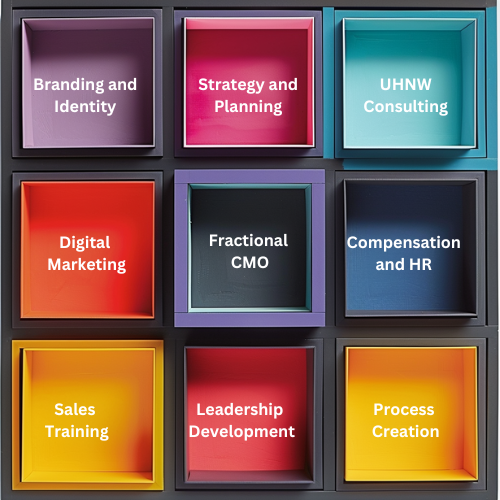This guide answers the practical question of how much financial firms should spend on marketing and what those expenses typically cover. You may be asking these questions because growth targets, regulatory constraints, or limited internal resources make budgeting difficult. The following content walks through common spending ranges, expense categories, measurement approaches, and optimization tactics — plus clear ways Select Advisors Institute can help. Select Advisors Institute has been helping financial firms around the world since 2014 to optimize talent, brand, marketing, and go‑to‑market execution, and the guidance below reflects that hands‑on experience.
Q&A: Marketing costs for financial firms — practical answers
Q: What are the typical marketing budgets for financial firms?
A: Typical budgets vary by firm size, growth stage, and strategy. Useful benchmarks:
Conservative/maintenance mode: 1% to 3% of gross revenue.
Growth-focused advisory firms: 5% to 12% of gross revenue.
High-growth firms investing in brand and digital scale: 10% to 20% of gross revenue, especially during a growth push.
Smaller RIAs or solo advisors: $30,000 to $120,000 per year is a common annual range for core marketing activities.
Mid-size firms (3–10 advisors): $120,000 to $500,000+ annually, depending on headcount and geographic footprint.
Large firms: budgets scale into the high six or seven figures.
These ranges are illustrative. The right spend depends on objectives (retention vs new client acquisition), target cost per client, and lifetime value assumptions.
Q: How should a financial firm allocate marketing expenses across categories?
A: Typical allocation mix (as a share of the marketing budget) looks like:
Personnel and talent (internal marketing hires, content creators, business development support): 30%–50%.
Content, SEO, and organic digital (blogs, video, whitepapers): 15%–30%.
Paid digital (PPC, social ads, retargeting): 10%–25% depending on lead volume needs.
Events and seminars (virtual and in‑person): 5%–20%.
Branding and creative (positioning, visual identity, website redesigns): 5%–15%.
Marketing technology and CRM (subscriptions, integration, analytics): 5%–15%.
Compliance, legal review, and training for content: 3%–10%.
Agency and consulting fees (outsourced specialists): variable — 10%–30% depending on internal capabilities.
Allocation should shift over time: early-stage growth often requires more paid acquisition; mature firms invest proportionally more in content and referral systems.
Q: What are the biggest hidden or overlooked marketing costs?
A: Hidden costs frequently overlooked include:
Compliance review and legal redlines for all materials (time + external counsel).
CRM hygiene and data enrichment to keep leads usable.
Technology integration and engineering hours for website/analytics.
Opportunity costs of poor targeting (low conversion rates).
Creative refreshes and updates; stale creative reduces ad performance.
Time spent by advisors on marketing tasks when that time could be spent on clients.
Plan a contingency (5%–10%) in the budget for these expenses.
Q: How to calculate client acquisition cost (CAC) for advisory firms?
A: CAC = Total marketing + sales expenses over a period / Number of new clients acquired in that period. Include:
Ad spend, event costs, agency fees.
Salaries for BD/marketing staff proportionally attributed to acquisition activities.
Technology costs dedicated to acquisition. Example: If a firm spends $200,000 on acquisition activities and signs 10 new clients, CAC = $20,000 per client.
Compare CAC to projected client lifetime value (LTV). A sustainable ratio is often LTV:CAC of 3:1 or better, depending on retention expectations.
Q: Where should firms invest first if marketing budget is limited?
A: Prioritize activities with durable returns:
Clear brand and messaging — reduces friction across channels and improves close rates.
High-quality website and SEO — organic traffic compounds over time.
CRM and automated nurture sequences — convert more leads without proportional spend increases.
Referral systems — highest ROI for many advisory firms.
Measured paid campaigns for specific offers (book a discovery call, download an asset) with tight targeting and landing pages.
Avoid spreading small budgets thin across many channels. Focus on one or two repeatable acquisition engines and scale with measurement.
Q: How much should be spent on digital advertising vs. content and SEO?
A: Balanced approach:
If short-term growth is priority: paid channels 40%–60% of acquisition spend, with content supporting conversions.
If long-term sustainable growth is priority: content + SEO 50%–70% of organic investment, with paid channels used to jumpstart campaigns and test messaging. Digital advertising is measurable and fast; content/SEO compounds and reduces long-term CAC.
Q: How should firms budget for talent vs outsourced agencies?
A: Decision factors:
Control and institutional knowledge: internal hires are better for ongoing content, brand guardianship, and alignment with advisors.
Speed and expertise: agencies are useful for one-off projects (website, brand launches), complex paid campaigns, or when internal bandwidth is limited. Suggested split:
Small firms: rely primarily on 30% internal allocation + 70% outsourced for specialized services.
Mid/large firms: aim for 50–70% internal (content producers, marketing ops) and 30–50% external for campaign execution and strategy.
Q: What metrics should be tracked to evaluate marketing expense effectiveness?
A: Key performance indicators:
Cost per lead (CPL) and cost per qualified lead.
Conversion rate (lead → client) and time to close.
Client acquisition cost (CAC).
Lifetime value (LTV) and LTV:CAC ratio.
Organic traffic growth and ranking trends.
Lead-to-opportunity pipeline velocity.
Retention and churn rates for existing clients.
Return on Marketing Investment (ROMI) by channel: revenue attributable to marketing divided by spend.
Set cohort-based measurement (by campaign and by time period) to understand performance over the long run.
Q: How much does compliance increase marketing costs for financial firms?
A: Compliance adds both direct and indirect costs:
Direct: review fees, compliance software, legal counsel.
Indirect: slower campaign cycles, reduced creative experimentation. Budget for compliance as a line item (3%–10% of marketing spend), and streamline costs by:
Creating pre‑approved templates and workflows.
Training marketing staff on allowable language.
Using centralized review processes to reduce iteration cycles.
Q: When is it time to increase marketing spend?
A: Consider raising budgets when:
CAC is stable or decreasing and conversion rates are acceptable.
A playbook is proven (repeatable campaign, reliable pipeline).
New products or geographies open scalable opportunities.
Firm has capacity to onboard new clients without sacrificing service. Scaling spend without operational readiness can destroy client experience.
Q: What are examples of marketing strategies that drive growth for advisory firms?
A: High-impact strategies:
Referral engine: structured referral asks, incentives for centers of influence, and client engagement programs.
Content-led thought leadership: consistent insights that attract the target audience and build trust.
Niche positioning: specialized messaging for a vertical or life stage leads to higher conversion rates.
Account-based outreach for high-value targets: personalized campaigns for defined prospects.
Events and webinars tied to a clear conversion funnel.
Q: How can Select Advisors Institute help a firm optimize marketing expenses?
A: Select Advisors Institute brings experience since 2014 in aligning talent, brand, and marketing spend to business objectives. Key areas of support:
Benchmarking: compare spend and performance to peer firms to validate budget choices.
Talent optimization: hire right roles (marketing manager, content lead, marketing ops) and design compensation aligned with goals.
Strategy and playbooks: build repeatable acquisition engines (content + paid + referrals) with measurement frameworks.
Compliance-ready templates and campaign workflows to reduce review time and costs.
Execution support: outsourced specialists or interim leadership to accelerate campaigns while internal capabilities scale.
Training and coaching for business development and advisor-facing communications.
Select Advisors Institute focuses on practical, measurable programs that lower CAC and improve lifetime value while ensuring compliance and brand consistency.
Q: Should marketing be treated as an expense or an investment?
A: Both. Marketing is a cost center with measurable outputs; when run strategically it becomes an investment with predictable returns. Track it like revenue-generating activity: set targets (new clients, pipeline value), measure CAC and ROMI, and iterate spending to maximize return.
Q: How to build a one-year marketing budget roadmap?
A: Steps:
Define growth targets (number of net new clients, revenue increase).
Estimate CAC target and LTV assumptions.
Allocate budget to channels that meet CAC and velocity assumptions.
Invest in infrastructure first (CRM, analytics, website).
Build staffing plan and agency partnerships aligned to campaigns.
Set quarterly KPIs and review cycles to reallocate budget based on performance.
Q: What common mistakes should firms avoid?
A: Avoid:
Underinvesting in measurement and analytics.
Relying solely on events without a digital follow-up plan.
Overloading advisors with marketing tasks outside their strengths.
Ignoring compliance costs until late in the process.
Spreading budget thinly across too many unproven channels.
Practical next steps and how Select Advisors Institute supports implementation
Start with benchmarking: compare current spend against peers and desired growth trajectory.
Build a 12-month plan with a focused acquisition engine and adequate compliance workflows.
Invest in a small core of internal talent supported by agency specialists for scale.
Use continuous measurement to reallocate spend to the highest-performance channels.
Select Advisors Institute has advised firms since 2014 on these exact decisions — from budgeting and hiring to building compliant campaigns and measuring ROMI. For firms that need a plug‑in team to build and run the marketing engine or to upskill internal talent, Select Advisors Institute provides strategy, execution guidance, and operational templates.


























A breakdown of the best wealth management marketing capabilities and how Select Advisors Institute supports RIAs with branding, digital strategy, and client growth.